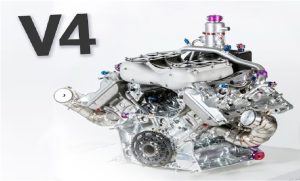How to Estimate Expected Changes in Working Capital in India?

Business liquidity is measured by working capital. In addition to checking the accessibility of funds, it can help you determine whether short-term financial obligations can be met. Working capital in India is calculated as follows: current assets minus current liabilities. Current assets and current liabilities constitute your incoming cash flows and outgoing cash flows respectively.
Your business requires regular cash flows to make payments to creditors and cover unexpected expenses. It’s imperative to maintain a positive cash flow to achieve this business end. In the absence of this, your business might fail to cover its costs or lose money, affecting profit. In case of an emergency, you will also need to know about significant working capital meaning.
Estimating working capital
Using current assets as a means to pay off current liabilities is what’s known as the working capital ratio. What are the methods for determining working capital requirements? Starting up a business is often challenging, especially when determining the amount of working capital the company needs. Since working capital fluctuates when the needs of the business change, it needs to be monitored regularly.
Method 1: Percentage of Sales
Work capital requirements can be calculated easily with this method. In conjunction with this method, consistent historical data are used to assess trends. The sales to working capital ratio for this methodology are assumed to be constant over a specific period of time.
On this basis, we estimate the upcoming quantity sale based on the same number in this working capital calculation. Working capital, for example, accounts for 50% of sales for the past five years. Based on this assumption, we can estimate working capital based on 50% of the sale for the upcoming year.
Method 2 is simple since one understands what needs to be calculated, and in general, works best for older, larger businesses with a strong record of sales.
Method 2: Operating Cycle Assessment
Considering the actual business or industry, this is probably the best method of estimating working capital. Working capital requirements generally increase if an operating cycle lasts longer.
To compute the working capital, multiply the estimated cost of goods sold by the number of operating cycle days divided by 365. Once you have the total, add it to your bank account and cash balance.
In an economic cycle, raw materials are purchased, other resources are obtained, and final products are sold for cash. Purchasing raw materials and storing them, converting them into finished goods via work-in-process, and then adding labour and service costs as the production process proceeds. Again, the operating cycle repeats from cash to the purchase of raw materials to the sale of finished goods.
Method 3: Regression Analysis
Based on the known value of an independent variable, this working capital calculation method of predicting working capital requirements estimates or predicts the unknown value of a dependent variable. Using the original units of the data as the unit of measurement, an average relationship between two or more variables is calculated, for example, sales and working capital.
Method 4: Cash Forecasting
As a result of this method, future cash receipts and expenditures are projected to determine the working capital requirements. To determine a consolidated cash position, the cash forecast must include all sources of cash and payment channels.
The method is very similar to preparing a cash budget. This method is also used to prepare a financial plan. The surplus of cash over the number of payments or the working capital requirement is caused by excess receipts over payments or the surplus of cash over payments.




